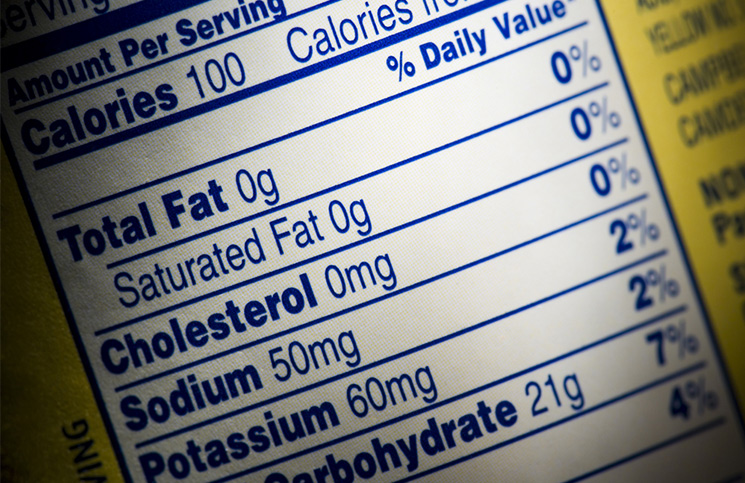When I started my BSc Nutrition and Dietetics program, I began reading nutrition labels. I frequently saw ‘Nutrition fact’ written inconspicuously on packaged food items, but I ignored it most of the time. So, why are nutrition labels frequently ignored by consumers? I wonder too.
Probably because most people are unaware of it. Those who are aware of it don’t fully understand how it’s read, others don’t bother reading it because it strains their eyes, and still, others are simply HUNGRY, too hungry to read the nutrition facts on the food they’re about to consume.
Consider the following scenario. You arrived home hungry after a long day at work or school or wherever. Then you had to rush to the store to get food because you didn’t have any at home. When you got to the store, you grabbed two instant noodles that weren’t your usual brand.
When you get home, the first thing you’ll do is cook it, followed by eating. Because you’re already hungry, the name of the noodle manufacturer, let alone the nutrition information on the label, isn’t your primary concern at this point. Your main priority is to fill your stomach.
I’m not attempting to explain why some people don’t read nutrition labels. That’s something I’ll never do! But, do you read the labels on clothes and gadgets before purchasing them?
Why you must read nutrition labels
The nutrition label provides important information about a packaged food such as serving size, calories, total fat, saturated fat, cholesterol, protein, carbohydrate, and vitamin content. Food labels should include 15 core nutrients. The label also includes a list of the food’s ingredients. This data assists you in staying on track with your daily nutritional/diet goals.
According to the FDA’s article on understanding and using the nutrition facts label, nutritionists and registered dietitians find this skill critical for healthy eating. People all over the world typically consume far too much salt, saturated fat, and added sugar. As a result, the need for nutrition labels to know what and how much you’re eating plays a critical role in being able to reduce your intake. See more information about the new nutrition facts label here.
Food ingredients to limit in your diet
It is recommended that you limit your daily sodium (salt) intake to less than 2,300 milligrams. If you have high blood pressure, you must be mindful of the sodium content of foods.
Saturated fats:
This can increase your risk of heart disease and high cholesterol. Saturated fat should be limited to less than 10% of an adult’s daily calorie intake. Limit saturated fats to less than 7% of total daily calories to further reduce your risk of heart disease. That is 140 to 200 calories or 16 to 22 grams (g) of saturated fats per day for a 2,000 calorie diet.
Trans fats:
This also raises your chances of developing heart disease. Ideally, you should consume no more than 0 grams of trans fat per day. When reading a nutrition label, keep in mind that companies can list the amount of trans-fat as “0 grams” if it contains less than 5 grams per serving.
This means that even if the nutrition label says “0 grams” per serving, your food may contain some trans fat! Check the ingredient list for trans-fat, which may be labelled as “hydrogenated vegetable oil” or “partially hydrogenated vegetable oil.” Trans fat is common in commercially prepared baked goods, fried foods, snack foods, and margarine.
Cholesterol is a type of fat.
If you have risk factors for heart disease, you should limit your daily cholesterol intake to no more than 200 milligrams. If you do not have any risk factors for heart disease, limit your daily cholesterol intake to no more than 300 milligrams.
Food Ingredients you should get more of in your diet
Fibre:
Fibre helps your body digest the food you eat, and it can help lower your risk of diabetes and heart disease. A food is considered high in fibre if it contains 5 grams of fibre or more per serving. Men 50 years of age and younger should get at least 38 grams of fibre per day, while women 50 years of age and younger should consume at least 25 grams of fibre per day. Fibre is found in foods such as fruits, vegetables and whole grains. Look for the words “whole grain” on the package and ingredient list.
Vitamins and Minerals:
The nutrition label lists vitamin A, vitamin C, calcium, and iron. You should try to get more of these nutrients in your daily diet, as well as other vitamins and minerals that are not listed on the label.
A healthy diet is crucial throughout your lifetime, since we can’t completely avoid packaged foods, paying attention to nutrition labels is a good step toward improving your overall diet.
If you’d like us to plan your meals, start your first consultation today.
You are what you eat, eat healthily!

One Response